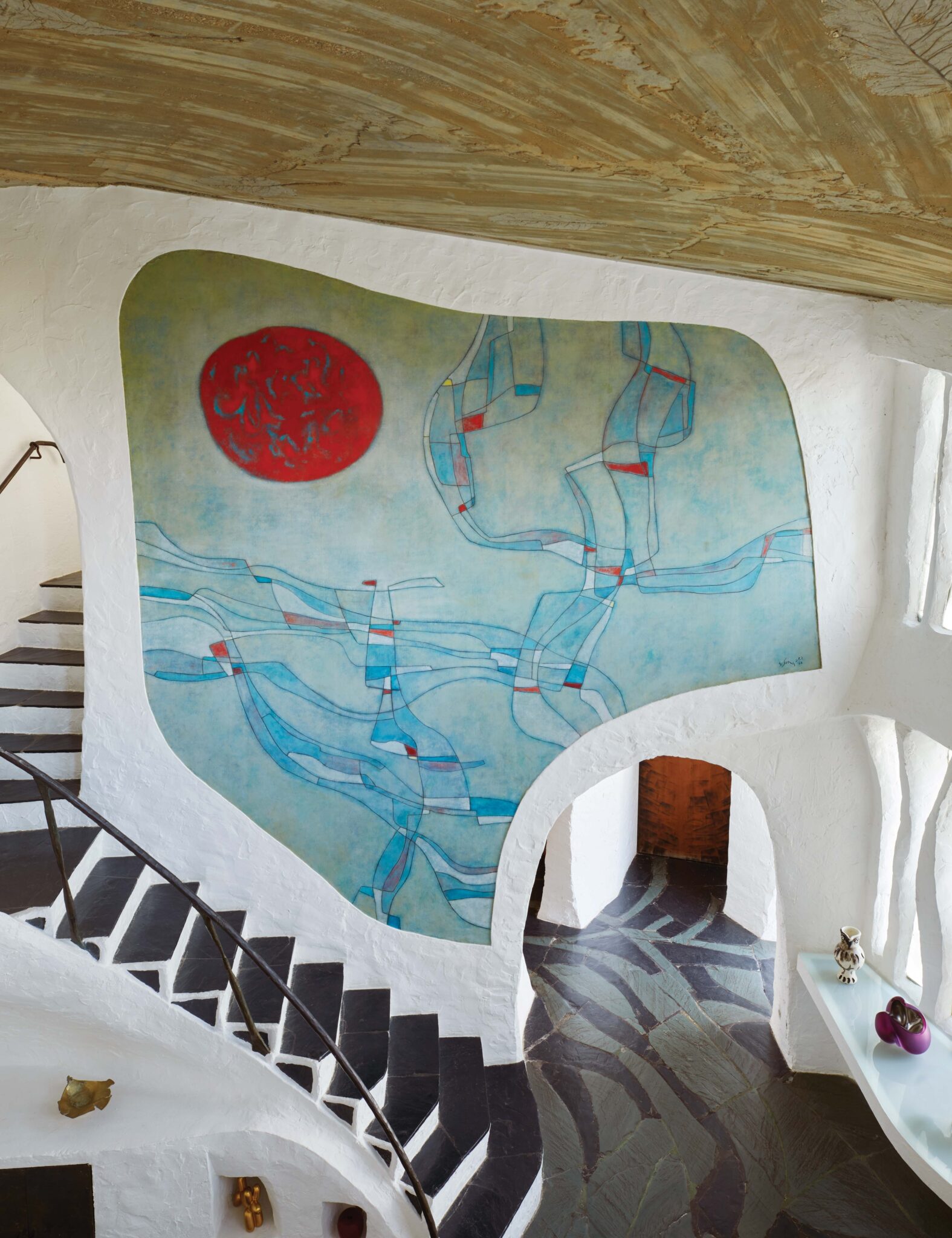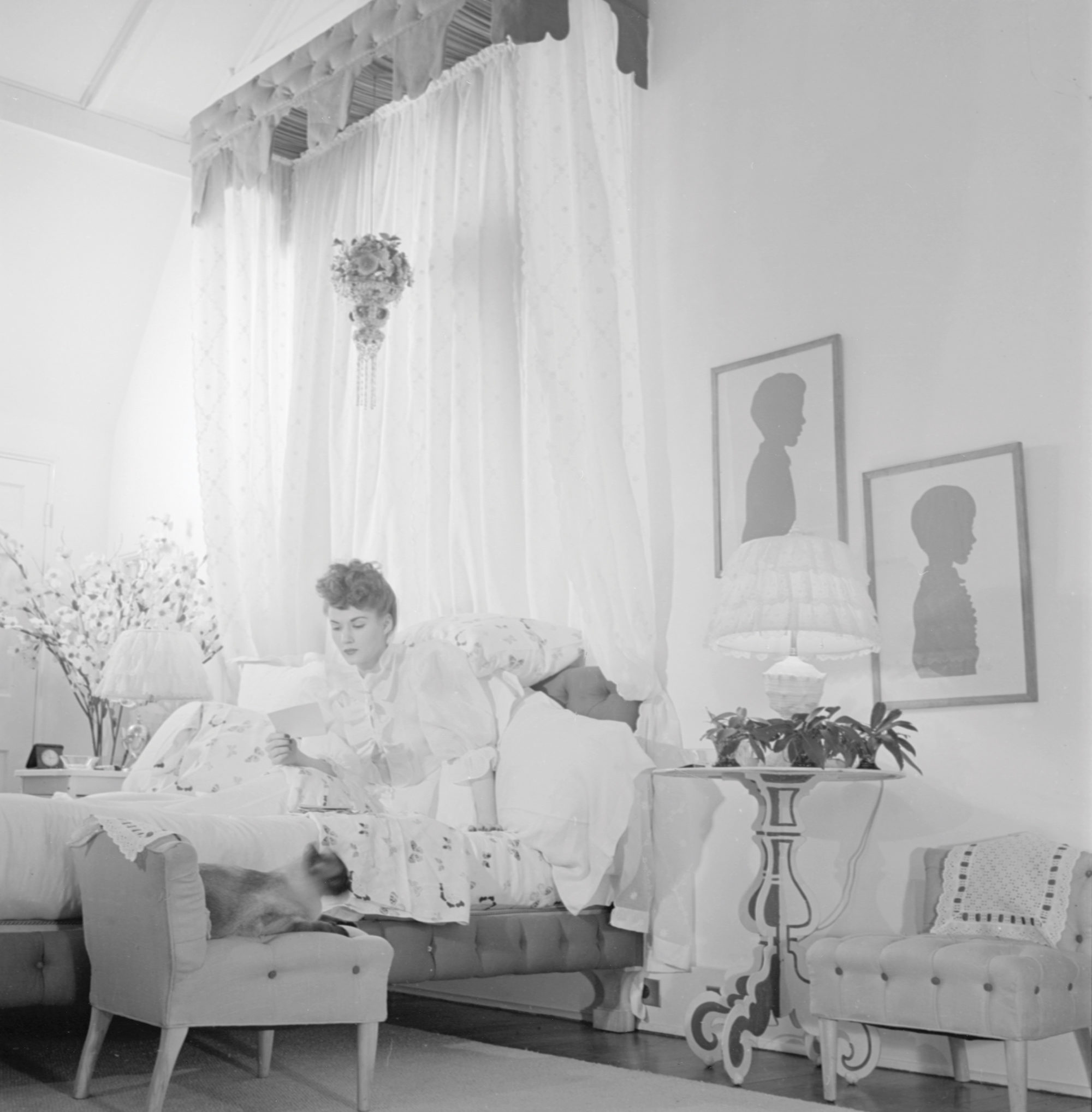George Stacey practically invented effortless glamour. Images of the homes he created for some of America’s most influential tastemakers—Diana Vreeland, Babe Paley, Frances Cheney, Grace Kelly—graced coffee tables from New York City to New Orleans to Los Angeles, thanks to a glossy magazine industry just coming into its prime. As young men, Billy Baldwin and Albert Hadley made pilgrimages to his studio. When Mario Buatta finally met his hero in the 1960s, he was nearly tongue-tied with awe.
Unlike those famous designers, Stacey was never a brand name. When he died in 1993, he was revered only among a rarified elite able to remember a vanished era. This fade to black was “sadly inevitable,” says Maureen Footer, who singlehandedly revived his reputation in 2014 with her book George Stacey and the Creation of American Chic. “Stacey was a reticent, closeted gay man for whom interior design was a métier, not a platform for his own personality. Today we conflate talent and celebrity, but that was never part of his thought pattern.”

The mirrored ceiling in Frances Cheney’s bedroom, captured by fashion photographer Louise Dahl-Wolfe for Harper’s Bazaar, was just one of the many Stacey projects that Diana Vreeland celebrated in the pages of her magazine.
COLLECTION CENTER FOR CREATIVE PHOTOGRAPHY, UNIVERSITY OF ARIZONA, 1989 ARIZONA BOARD OF REGENTSBorn in Connecticut in 1901, Stacey studied design at Parsons School of Design before heading to Paris in the 1920s, where he learned about antiques while absorbing the new ideas, attitudes and experiences fizzing all around him, including how to use volume and contrast to play to the camera. In 1933, he returned to New York to work for Rose Cumming.
Almost immediately, Stacey’s cutting-edge vision drew admiration—and clients. No one had ever seen rooms quite like these, simultaneously opulent and restrained. Audacious palettes—whether supersaturated navy and pink, or deepest scarlet and emerald—were further emboldened with luxe satin banquettes, neoclassical statues and ample crystal and mirrors, then gently reined in with classic design principles like symmetry and proportion. The resulting rooms were dramatic, sparkly and, perhaps most surprisingly, incredibly structured and calm.
By the late 1960s, this zeitgeist-reader saw that the world had moved on. “What he offered—craftsmanship, devotion to detail— wasn’t in sync with what people wanted anymore,” explains Footer. So he retired, spending the rest of his life traveling between his château outside Paris and his squash court–turned-abode on the Long Island estate of his lifelong friend and first client Frances Cheney.
The fact that Stacey’s career parallels the rise and fall of Hollywood’s infamous “Hays Code” is sheer coincidence, but a poignant one. From 1934 to 1968, film directors were forbidden from portraying anything overtly sexual on-screen, instead using lush sets and costumes to convey sensuality. So it was, perhaps, for Stacey: In his personal and professional lives, he kept himself and his sexuality under wraps; in the rooms he dreamed up for his clients, he expressed a passion so potent and creative that it forever changed American design.
THIS STORY ORIGINALLY APPEARED IN THE SPRING 2022 ISSUE OF FREDERIC. CLICK HERE TO SUBSCRIBE!

























